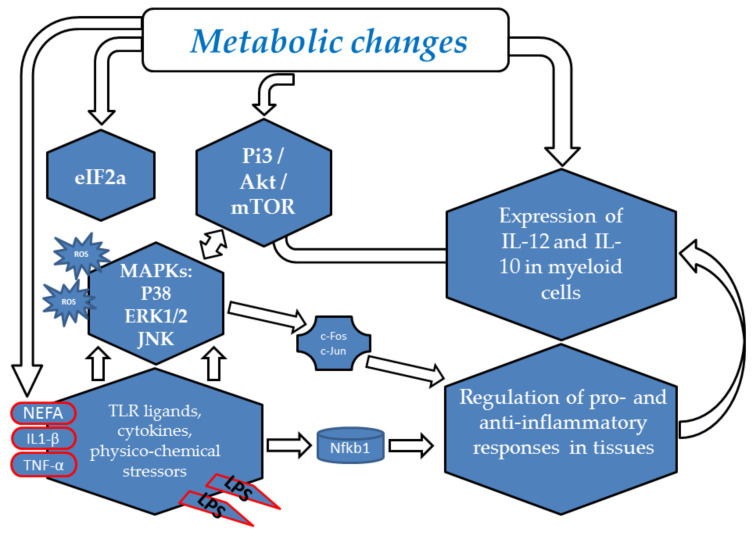Figure 2.
Metabolic stress is perceived by the innate immune system. The Pi3/Akt/mTOR- and eIF2α-dependent signal transduction cascades are the main signaling pathways monitoring nutrient availability and controlling metabolic stress responses. Toll-like receptors (TLRs) are expressed on innate immune cells, such as neutrophils, macrophages, and dendritic cells, and respond to the membrane components of Gram-positive or Gram-negative bacteria and to saturated free fatty acids mainly included in the NEFA (Non-esterified Fatty Acid) that are released by adipose tissue during status of negative energy balance. TLRs provoke rapid activation of innate immunity by inducing production of proinflammatory cytokines and upregulation of costimulatory molecules by both MAPK activation, which in turn activates c-Fos and c-Jun, and NF-kappa B activation through a MyD88-independent pathway. In addition, interleukin-1β (IL1-β) and tumor necrosis factor alpha (TNF-α), as critical cytokines, can induce a wide range of intracellular signal pathways as well as inflammation and immunity as nearly all cells express the respective receptors.

